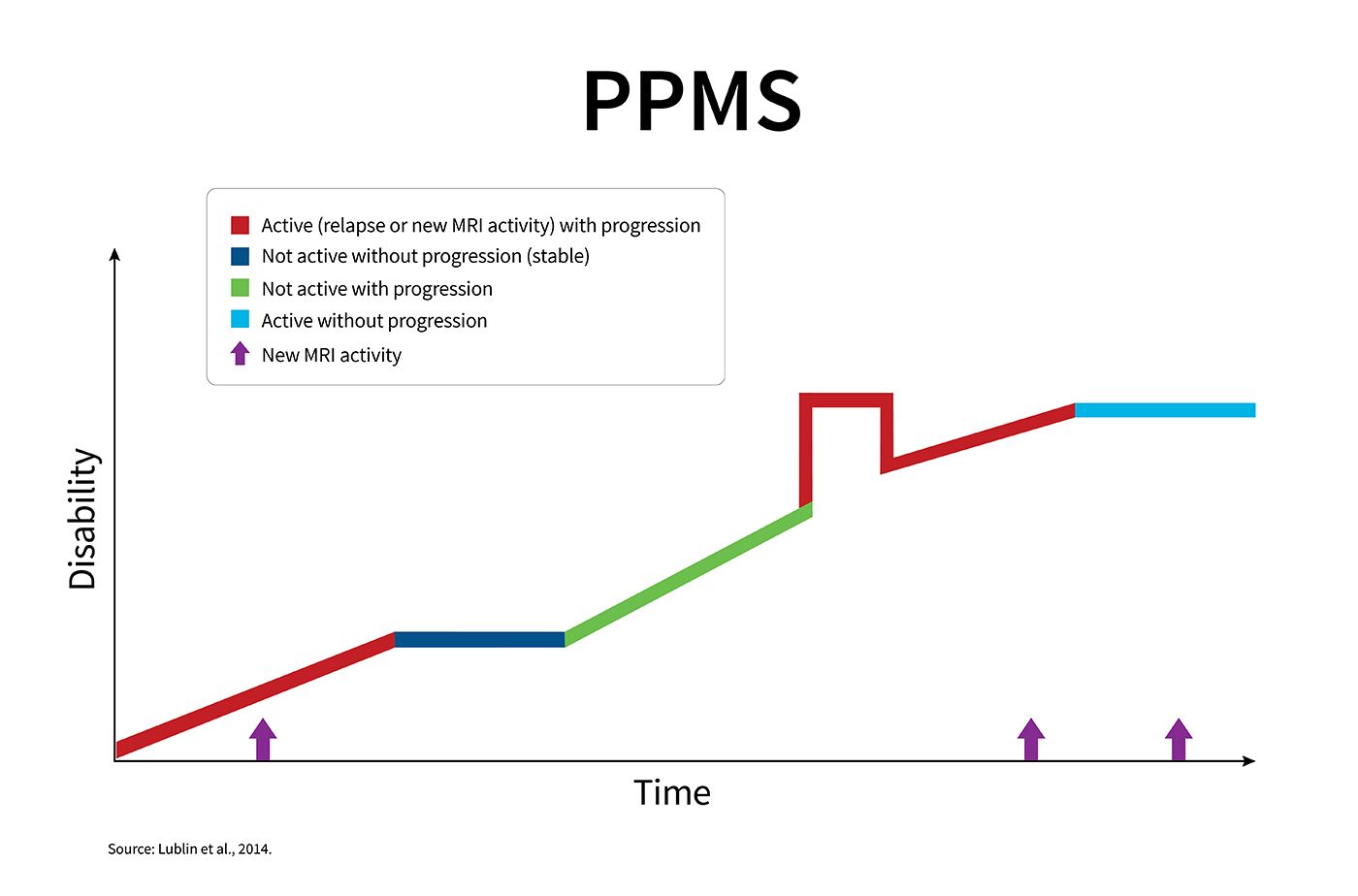Primary Progressive Multiple Sclerosis (PPMS)
Understanding Primary Progressive Multiple Sclerosis (PPMS)
This graph shows the kinds of disease activity that can occur in PPMS. However, each person's experience with PPMS will be unique. As the graph shows, you might have brief periods when the disease is stable, with or without a relapse or new MRI activity. You may also experience periods of increasing disability with or without new relapses or lesions on MRI.

Monitoring the Disease Course
Disease activity and progression can be evaluated by neurologic examination and MRI. Monitoring your disease course at different points in time helps you and your MS care provider have important conversations about your treatment options and prognosis.For example:
- If you have PPMS that is active, with new MRI activity or relapses, your conversation with your MS care provider could be about starting treatment with a disease-modifying therapy (DMT) to reduce the risk of a relapse, as well as rehabilitation to help improve function and mobility.
- If you have PPMS that is stable without activity (no new MRI activity or relapses) or progression, the conversation with your MS care provider could include the role of rehabilitation to help you maintain function, as well as other symptom management strategies that you may need.
- If you have PPMS that is not active (no new MRI activity or relapses) but is progressing with increasing accumulation of disability, the conversation with your MS provider could focus on the rehabilitation strategies that can help you maintain function and keep you safe and independently mobile.